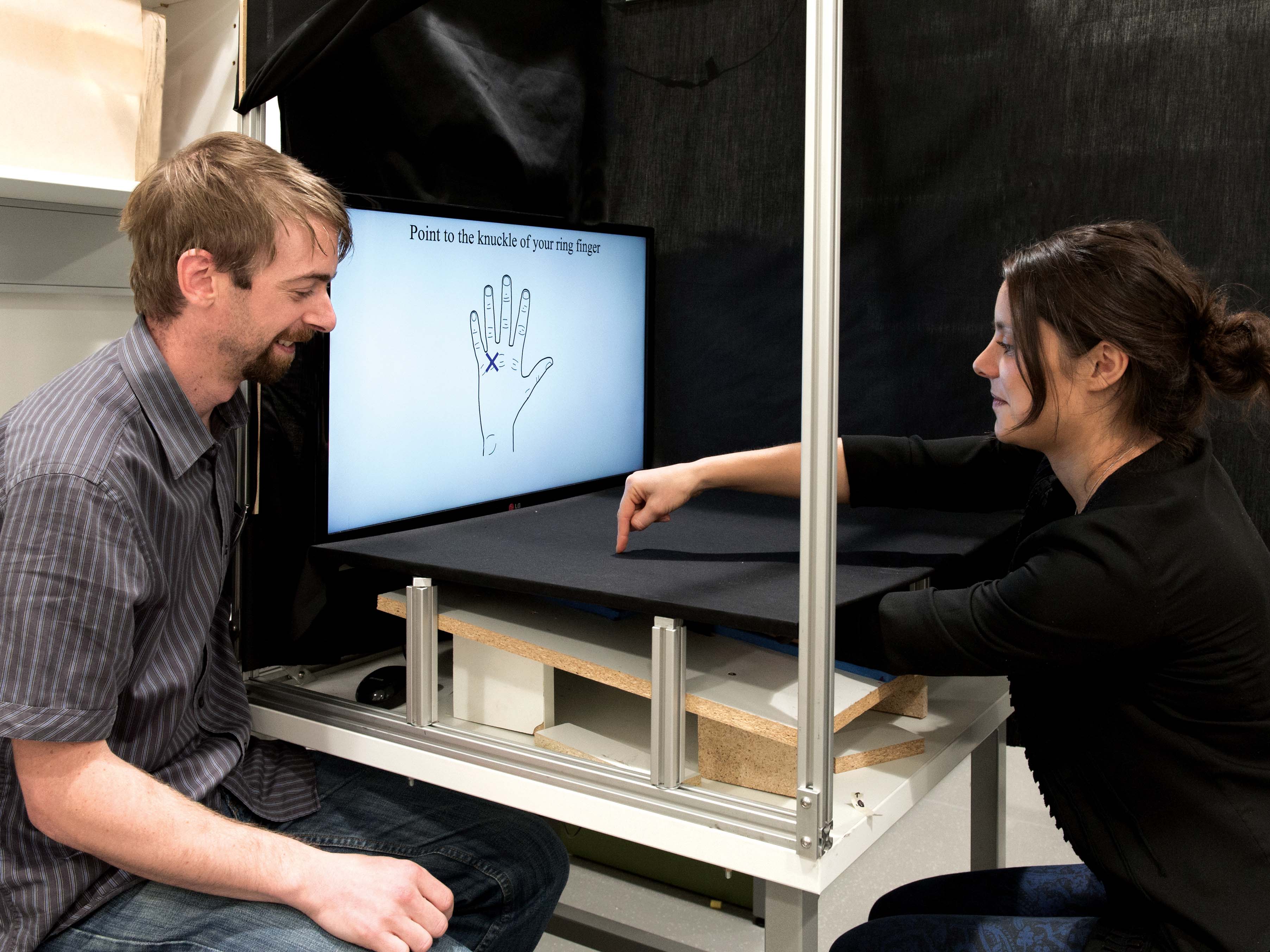A paradigm shift in proprioception
Proprioception is the sense of our body’s own actions. It is how we know where our body is in space.

Dr Lee Walsh explains his experiment to a volunteer as she practices the task she will need to perform during the experiment
Disruption to proprioception can occur in many clinical conditions, including dystonia, stroke and Parkinson’s disease.
When people have problems with proprioception, they cannot make normal movements. Over the last decade, numerous new findings have led to a paradigm shift in how we understand proprioception. This shift is so profound that a ‘New’ proprioception is being defined.
Classical proprioception is considered to come mostly from signals generated by receptors in the muscle, skin and joints. The ‘New’ proprioception extends this view as we now know that signals generated in the brain are also important for sensing the body and its movement.
 In this figure on the left, the healthy subject’s hand was placed on the table and she was asked to point to particular parts of her hand. The black lines are where her hand was; the red lines are where she thought it was. Note that the red (perceived) hand is too short, too wide and in the wrong place.
In this figure on the left, the healthy subject’s hand was placed on the table and she was asked to point to particular parts of her hand. The black lines are where her hand was; the red lines are where she thought it was. Note that the red (perceived) hand is too short, too wide and in the wrong place.
This new knowledge is not yet being used in a clinical setting and the testing of people with proprioceptive problems is the same as it has been for 30 years. Our research is at the forefront of ‘New’ proprioception and our work is playing a major role in directing these changes in the field.
We are using the new knowledge to develop tests that can be used in both the laboratory and the doctor’s surgery.

Thanks for sharing the process of your new research in proprioceptive problems. Look forward to learn your further movements in this field.